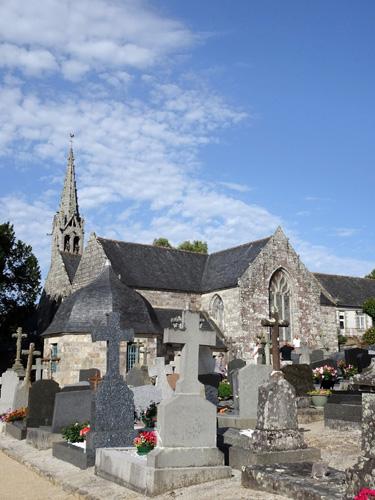Church of Sainte-Trinité de Kerfeunteun

The Trinity Church on Missilien Street is a fine example of a parish enclosure with three founding elements: the placister, the calvary and the fountain. The church is built in an enclosure bounded by a wall, the placister. Just to the left of the entrance, there is a stone blocking the entrance, which can be easily stepped over by man: it is the impassable stiles for animals that prevent them from wandering around in the parish enclosure. It is easy to imagine the cows wandering through this corner of the countryside.
About this building
This church includes some reused elements of the Forest Manor House, which was demolished in 1943. The bell tower rises directly on the front gable wall, balanced by two symmetrical corbels located on either side of the gable and providing support for the belfry floor divided into three parallel piles to provide free space for the swinging of the bells.




